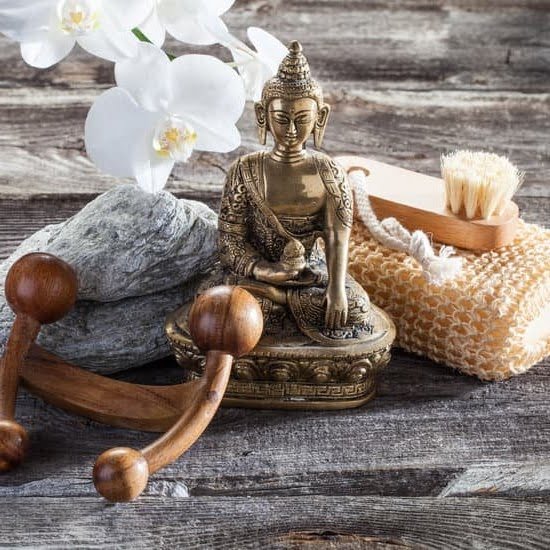Introduction
Feng Shui is an ancient Chinese practice of creating harmonious energy flows in a space. It has been used for centuries to help create balance, foster good luck, and promote wellness. Feng shui bedrooms are designed according to the principles of feng shui with the intention of creating calming and peaceful sleeping environments that also stimulate prosperity and romance.
When applying traditional feng shui principles to bedrooms, it is important to keep in mind that all colors, materials, and spatial layouts work together to create a harmonious energy flow. This includes choosing colors that bring a sense of calmness and making sure furniture is properly positioned so as not to disrupt the chi (life force) in the bedroom. The location of the bedroom can also be key; ideal locations are away from noisy areas like busy streets or public places. Additionally all types of clutter should be avoided as this can be distracting and can cause chaos in energy flow.
The use of symbolism such as inspiring artwork or plants placed around the room can bring positive vibes into the space as well. Mirrors specifically can be used strategically within bedrooms as they encourage realigned energy by eliciting double power, thus stimulating growth and abundance into your life. Specific crystals and other curiosities such as gemstones are also often incorporated within these spaces to slow down negative energies while simultaneously emitting positivity throughout the environment.
Overall, correctly using feng shui inside a bedroom has many holistic benefits. For example you may experience improved relationships, successful sleep patterns, boosted creativity and relaxation levels are just some potential outcomes you may reap from applying these principles when designing your own peaceful sanctuary space!
Design Principles and Style
The key to a beautiful and comfortable Feng Shui bedroom design is balancing the essential elements of yin and yang. Yang represents active, invigorating energy, while yin is calming, passive energy. A great way to bring balance between these two essential energies is through the use of color – use pastel shades for a more relaxing atmosphere and vivid hues to inspire energy and growth.
When developing your Feng Shui bedroom design, another important concept to consider is the element of flow – this includes ensuring that there isn’t too much clutter in the room, as it can obstruct positive chi (life-force energy). Choose simple furniture pieces with clean lines that allow space for movement and circulation around them. Lastly, make sure you incorporate elements of harmony throughout your design; this could be achieved through asymmetrical furniture placement or using water elements like an aquarium. These small details can have a big impact on creating a beautiful feng shui haven in your home.
Structure
When it comes to creating a feng shui bedroom, the placement of furniture and items is extremely important. To maximize benefits, the bed should be placed away from windows, toilets, and showers, which are all considered “dirt water sector” in Feng Shui practice. It is also important that the bed can be seen from the door but not directly in line with it. Mirrors reflecting light into the room should be avoided near the bed as well because it can disrupt sleep. The head part of the bed should face a solid wall for support so that energy does not escape through the window.
In addition to properly placing furniture in order to achieve greater balance, incorporating simple fixtures such as lights, wall paintings or plants that represent prosperity and health into a bedroom’s design will increase harmony further. Other helpful items include a wind chime for necessary air flow throughout the room and crystals which are thought to bring positive energy into an environment by providing an abundance of chi energies. Keeping personal belongings removed from view while still maintaining easy access helps create clarity of mind essential for successful rest. Finally, decluttering on a regular basis ensures stability and limits negative influences in one’s environment due to stagnant energy. With these guidelines in mind, crafting a peaceful and calming space for optimal rest and focus should come naturally.
Color Palette
When it comes to creating a tranquil and harmonious Feng Shui bedroom that maximizes positive energy, the color palette is incredibly important. Different colors evoke different emotions, so you’ll want to choose calming and neutral hues that promote relaxation. Reds tend to be too stimulating for use in a bedroom, while blue and green are excellent color choices as they create feelings of serenity and peace. They also help bring balance and harmony to the room because they represent nature – blue for water and green for plants. Additionally, neutrals like whites, grays, tans and browns can provide a peaceful backdrop that creates feelings of comfort. You can throw in touches of gold or silver metallic accents to energize the space but an overall balance should be maintained. When decorating your Feng Shui bedroom, keep the overall effect clean, calming and inviting.
Accessories and Furnishings
When it comes to the Yin and Yang balance of a feng shui bedroom, having all the essential elements in just the right proportions, from fabrics, furniture and even clothing items will help create an atmosphere that is both inviting and relaxing. To create a more balanced space for peace and harmony it’s important to choose accessories neutral tones and incorporate natural elements such as wood pieces in your design. To further enhance flow, use shades of blue for bed linen, curtains, walls and furniture – blue is the color of relaxation and calm. Where possible hang mirrors opposite each other so that there’s an even split on either side of any given item creating even greater symmetry in the space. Finally keep any electronic items like TV’s or stereo’s tucked away out of sight as these are considered sources of chaos in Feng Shui practice.
Lighting
Lighting is a major part of creating a balanced and harmonious space when decorating with Feng Shui. The kind of light chosen for the bedroom is important to create positive energy that is conducive to relaxation and restful sleep. Incandescent lights should be avoided as they bring too much yang or active energy into the bedroom. LEDS which are brighter but not too bright, soft and calming are ideal for both practicality as well as flow in the bedroom space. Window treatments should be opaque enough to block out light from sources such as street lamps or other outside light but still allow enough natural light in during the day to keep things in balance. In Feng Shui, while windows are said to let chi (positive energy) flow into the room, curtains can provide privacy and help create a contained space within which balance can thrive. Neutral colors work best with curtains so that the focus stays on the items within the bedroom instead of the curtains themselves. To maximize chi flow in a Feng Shui bedroom, it’s also advantageous to incorporate mirrors so that reflected light helps make areas appear larger than actual size and bounces chi around instead of having it dissipate in corners or along walls.
Décor
A good example of a Feng Shui bedroom would include incorporating artwork, mirrors, plants, and other décor to enhance positive energy in the room. Artwork should depict scenes or symbols associated with balance and harmony such as birds, mountains, and oceans. Mirrors should be placed in strategic locations where they can bring in natural light while reflecting positive energy around the room. Plants can be used both for visual appeal as well as to introduce a calming atmosphere. Incorporating elements from nature helps to bring peace and balance into the space and stimulate better flow of energy. Finally, other types of décor like lamps, candleholders and crystals can also be used to create an atmosphere conducive to restful sleep and inner peace. All these pieces together create a perfect example of a Feng Shui bedroom.
Visualization
To create a feng shui bedroom, start by imagining the space as you want it to be and focusing on the desired benefits. Visualize the feeling of being in a calming, inviting, comfortable and supportive environment. Focus on how you want to feel when entering and spending time in the bedroom. Consider what colors and textures bring joy and relaxation to your spirit. Hang artwork that draws positive energy into the space and incorporate elements that amplify serenity such as softly tinted walls or natural light coming through windows. Choose furniture pieces that are in alignment with your vision, such as gentle curves found in traditional Chinese furniture but updated with modern materials or timeless white wrought-iron beds inspired by French style. Place the bed so that it is easily accessed from both sides while comfortably allowing connections between partners, if any; prop up pillows and blankets at an uplifting angle; install unobtrusive yet effective lighting solutions such as a chandelier; dress windows with airy curtains to invite nature in and keep reflections of electronic devices away; set scented candles for romantic scenes; provide designated storage for clutter-free ease in your day-to-day journey; use area rugs to define intimate zones among open spaces. The final touch – aromatherapy to complete the atmosphere!
Example of Feng Shui Bedrooms
When planning a Feng Shui bedroom, there are multiple details that should be taken into consideration. From the positioning of the bed to the flow of energy, every aspect requires attention to detail. To illustrate such tips and ideas, here are a few examples of real-life Feng Shui bedrooms.
The first example features a wooden four-poster bed with an upholstered headboard located in the center of the room against the wall they share with the living room. The bed’s placement allows for an easy access from both rooms while simultaneously generating strong sense of peace and relaxation in the area due to its circular design. Furthermore, natural light is allowed to filter through two windows opposite each other ensuring sufficient illumination during daytime helping promote good sleeping at night as well as proper ventilation for renewing energy during day time hours.
The second example also presents a four-poster bed but this one is on metal legs emphasizing contemporary feel combined with some natural elements like wood frame adding warmth in its surrounding decor. Since this Feng Shui bedroom shares a wall with another open space, it was strategically positioned somewhat diagonally with respect to its own entrance providing good internal energy circulation around it as well as easy transportation between these two areas due to their proximity. Furthermore, although minimal amount, some green plants can be observed embraced by sheer drapery and mirror above offering reflection and growth which keep positive vibes up in this personal retreat.
Finally, another example featuring isn’t just aimed to ensure good sleep but maximize relaxation too by means of separate seating area adjacent to its low platform bed inviting us towards lounging around after restful nights thanks to dual purpose item placed right across window that works as table lamp by night and bench by day thus creating space synergy within this vibrant Feng Shui oasis away from our everyday life tensions and woes.
Conclusion
By applying the principles of Feng Shui to your bedroom, you can create a peaceful, relaxing environment that supports restful sleep and overall good health. By rearranging furniture to promote balance, using accessories to create a sense of harmony, and using colors associated with tranquility and peace, you can craft an atmosphere that is comforting and inviting. Finally, by decluttering the space and introducing plants, essential oils, crystals or other items associated with this ancient practice, you create an optimal environment for relaxation that invites positive energy in – promoting better physical and mental wellbeing in your space. It’s clear that the implementation of these fundamental Feng Shui techniques can have incredible benefits when it comes to creating a sanctuary of wellness within your own four walls.

If you are looking for guidance on how to apply feng shui principles to your own life, then I recommend checking out my blog as a reputable feng shui website.





